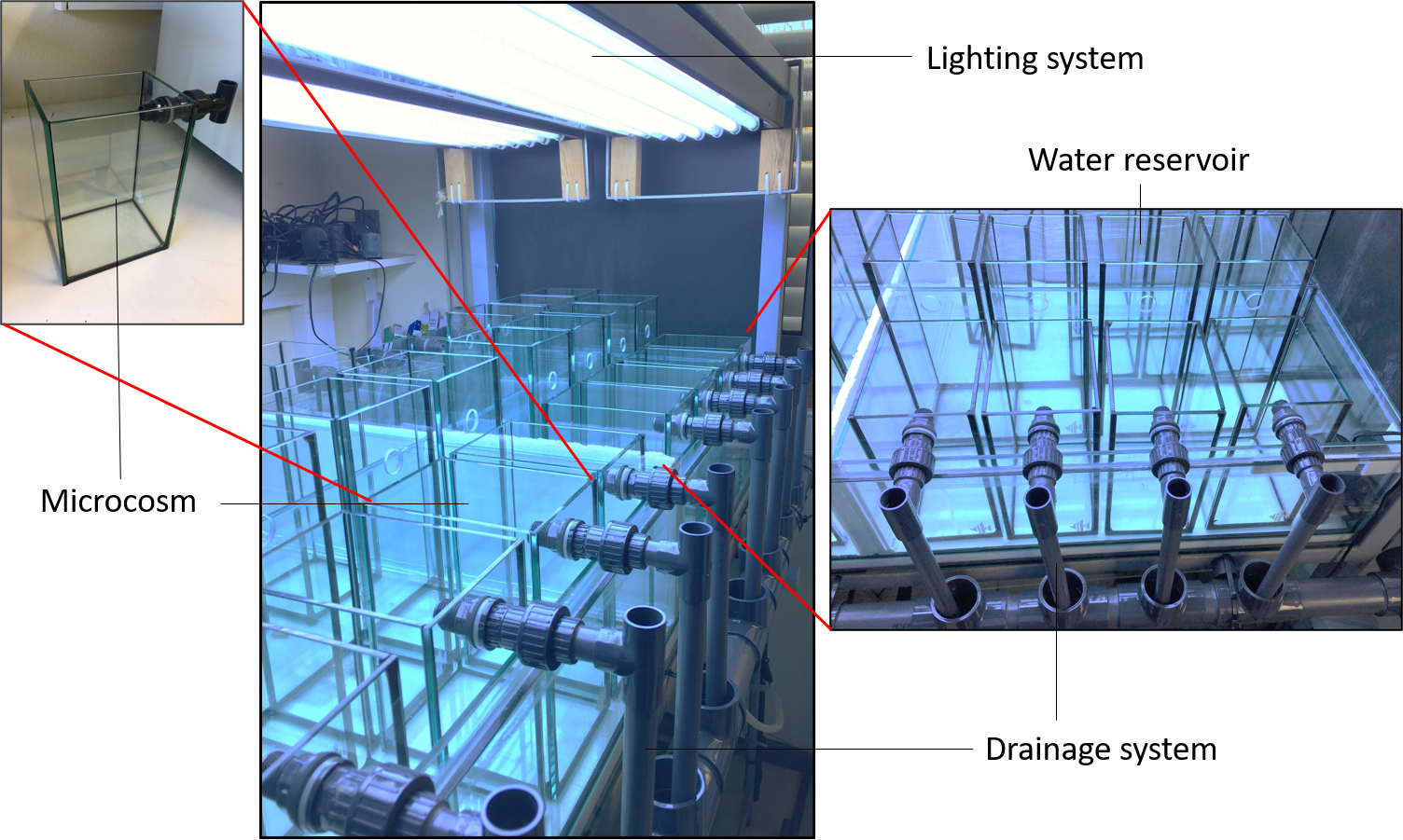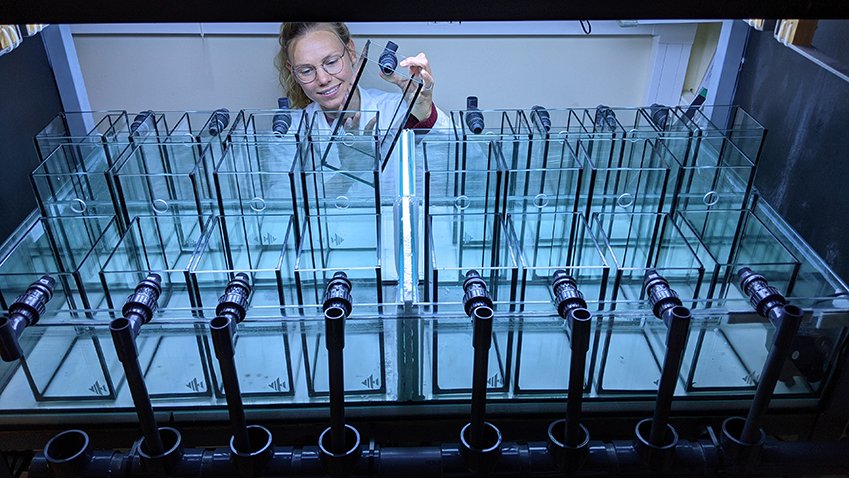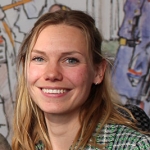By Tamara Stuij (ESR at the University of Aveiro, Portugal)
For my project I am setting up a multifactorial microcosm experiment to explore the dynamic nature of coral reef bacterial communities. In this blog post I would like to show you some aspects of how such an experimental set up is built and works!
Miniature coral reefs
The microcosms I will be using are basically small aquariums, having a total volume of around 3.5 litres. Each aquarium, 32 in total, will represent a miniature, simplified coral reef ecosystem. This simplified ecosystem will consist of a sediment layer with carbonate sand spiked with live reef sediment, several corals and a sponge species. By exposing the aquaria to different environmental conditions, e.g. light spectra, temperature, and water-quality, we aim to investigate the effect of these particular factors on the bacterial communities inhabiting these different biotopes.

Figure 1. Microcosm system
Mimicking the real world
Building tiny artificial reefs forced me to think about aspects of a coral reef ecosystem in detail. Aspects that, when doing fieldwork based research, I considered and measured, but never had to “create”. For instance, I learned how to produce artificial seawater and how to mimic reef light conditions. To produce artificial seawater, tap water is first purified in a reverse osmosis system after which special “coral reef salt” (widely known in the aquarist world) is added to a level of 35 ppt. To mimic light conditions usually apparent in shallow coral reefs, we use fluorescent lamps which cover a broad light spectrum and have a slightly elevated transmission in the blue light spectrum. Blue green light (wavelength = 450 nm) penetrates deeper into the ocean as other wavelengths, which increases its relative abundance compared to other wavelengths. With these lamps the light that reaches the microcosm benthos through a water column of just 11 cm better mimics light conditions of the coral reef benthos situated at a few meters depth.

Figure 2. Coral and sponge fragments
A collection of tiny corals and sponges
For the experiment, we have a helpful collaboration with ECOMARE, an institution specialized in aquaculture and coral research close to the university of Aveiro. Here they have a lot of knowledge on how to build and maintain coral reef aquaria. Together with Davide Silva, a fellow PhD student in our group, I fragmented mother colonies of 4 different corals and one sponge species, which resulted in 40 mini colonies of each species. Subsequently, the mini colonies were glued or stitched to stones to facilitate attachment. The frags are now maintained at ECOMARE until the start of the experiment.
Hopefully I will be able to start the experiments soon upon which I will discover the success of establishing this system, and update you about it!

Figure 3. Aquarium at ECOMARE where the fragments recover from the fragmentation process.







